
10 Benefits of Custom Software Solutions for the Manufacturing Industry
Key Benefits of Custom Software Solutions for the ...

Author:
Tomislav Horvat

· NIS2 compliance extends beyond IT to your entire organization and supply chain
· Replace manual processes with automated tools that provide real-time compliance visibility
· Develop incident response plans that meet strict reporting deadlines (24h/72h/30d)
· Implement regular security training for all staff - people are your biggest vulnerability
· Establish clear governance with board-level accountability for compliance matters
· Switch from annual assessments to continuous risk monitoring and vulnerability management
· Remember: penalties can reach €10 million or 2% of global turnover
If you think NIS2 is just another IT compliance checkbox, you're in for a surprise.
The directive significantly expands regulatory requirements and affects far more organizations than its predecessor.
Many companies make the mistake of viewing NIS2 as solely an IT department responsibility, when in reality, its reach extends throughout your entire organization.
From legal to HR to procurement - every department needs to understand and implement appropriate security measures.
Your partners and vendors must align with these standards too.
This comprehensive approach makes sense when you consider that NIS2 doesn't just target a handful of critical industries anymore.
The scope now includes medium and large entities across energy, healthcare, transport, banking, digital infrastructure, and even public administration.
To avoid this pitfall, start by mapping out how NIS2 requirements touch different parts of your business.
You'll need to foster open communication between departments and build a culture where everyone recognizes their role in maintaining cybersecurity compliance.
Remember, regulators won't accept "we didn't know it applied to us" as an excuse.
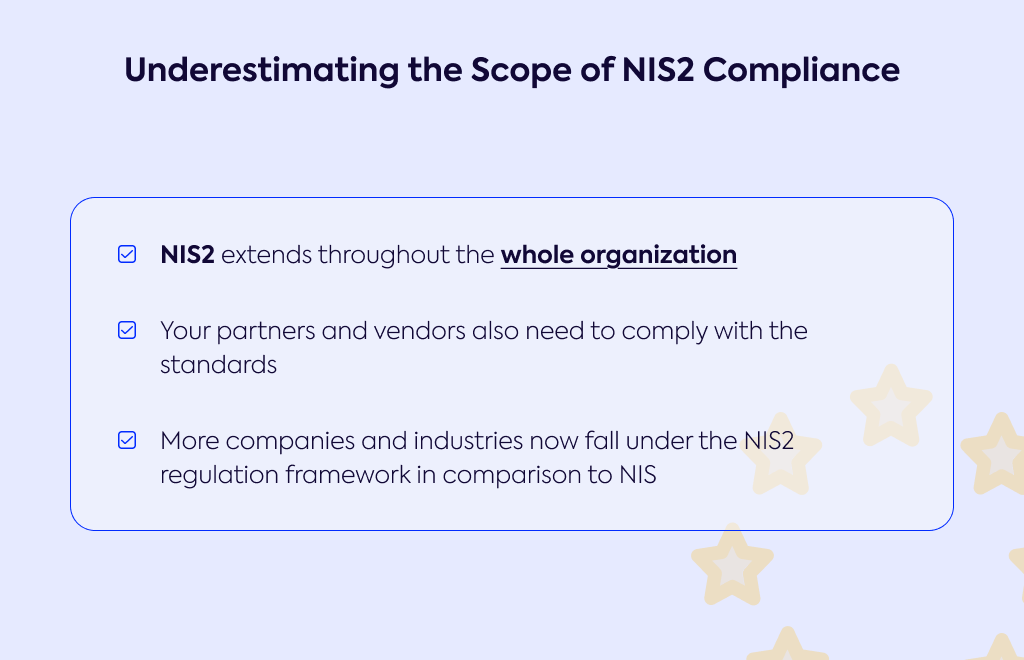
You might have your own security house in perfect order, but what about your suppliers?
NIS2 makes you responsible not just for your security posture but also for ensuring your partners meet the same standards.
This expanded supply chain focus catches many organizations off guard.
The consequences of overlooking this area can be devastating.
Look at what happened to Target in 2013 - hackers compromised an HVAC vendor's credentials and used this seemingly minor access point to steal 40 million credit card numbers.
This breach perfectly illustrates why NIS2 emphasizes the entire supply chain.
Taking control of this risk starts with implementing good third-party assessment tools that continuously monitor your suppliers' security practices.
Don't stop at technical evaluations either - NIS2 expects you to consider non-technical factors too, like whether your vendors might be influenced by non-EU countries.
Make sure your contracts include clear cybersecurity clauses that spell out exactly what you expect from partners.
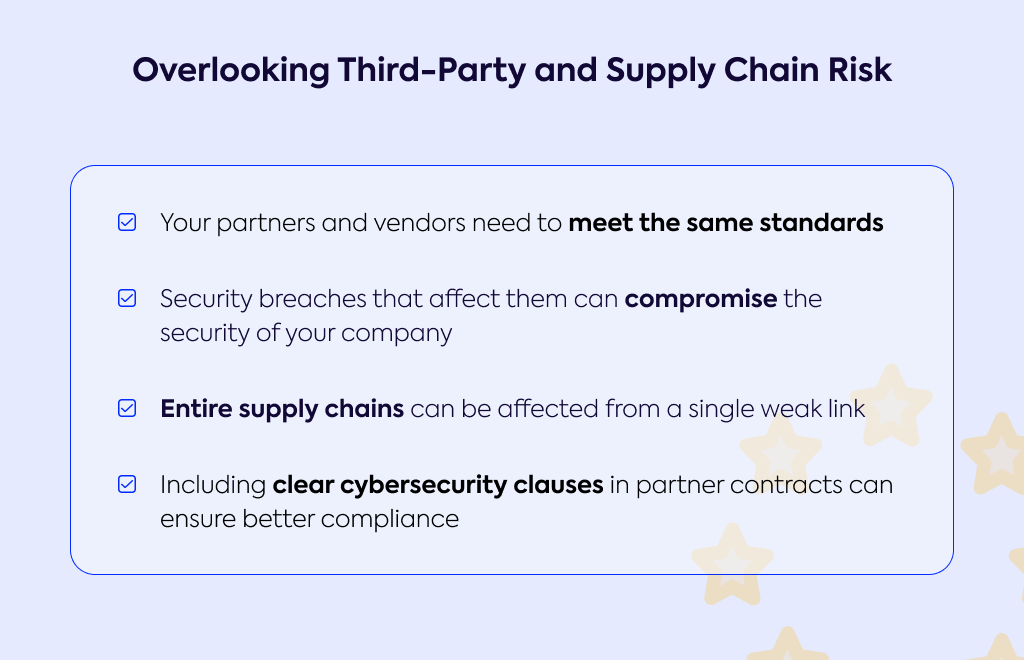
Having a dusty incident response plan sitting on a shelf somewhere just doesn't cut it anymore.
Many organizations fall short by maintaining outdated plans or failing to integrate modern security operations capabilities like SOC or MDR services.
NIS2 sets tight deadlines that can feel overwhelming if you're not prepared: you need to file an initial report within 24 hours of detecting a significant incident, follow up with an intermediate report within 72 hours, and deliver a comprehensive analysis within a month.
Missing these deadlines can lead to substantial penalties.
The solution? Develop a response plan that accounts for these specific timeframes.
Your team should know exactly who does what when an incident occurs.
Run regular simulations to test your process - you don't want to discover gaps during an actual breach.
Think of these exercises like fire drills - they might seem disruptive now, but they're invaluable when a real emergency hits.
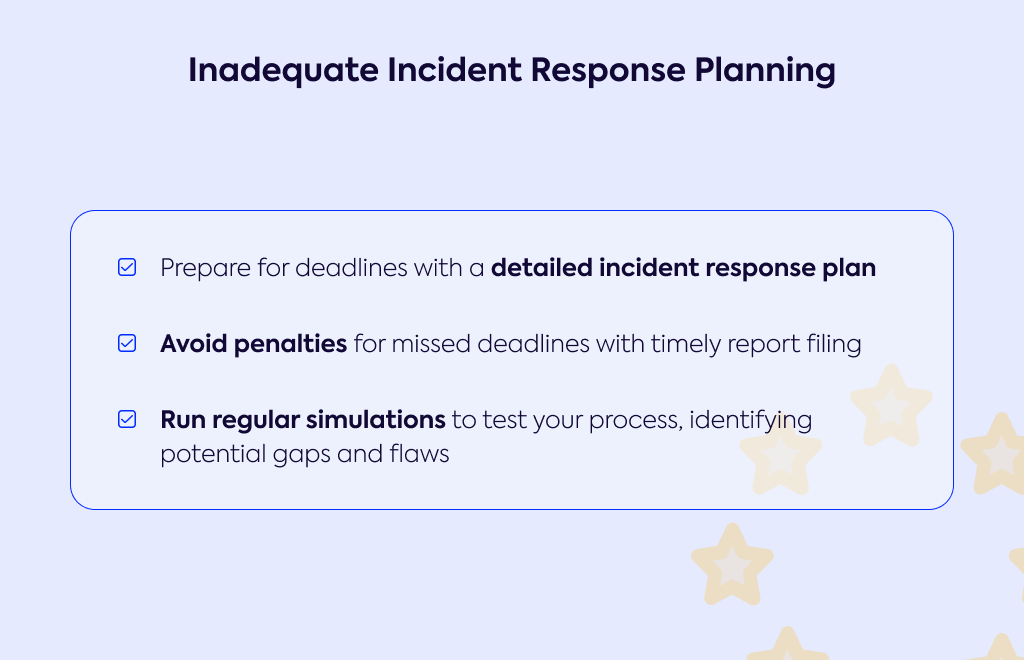
While many companies invest heavily in security technology, they often overlook their most vulnerable asset - their people.
Security isn't just the responsibility of your IT team; everyone in your organization plays a role in maintaining your defenses.
Consider what happened at Crelan Bank, where a simple phishing scam led to losses of around €70 million.
An attacker gained access to an executive's email and tricked employees into transferring funds to fraudulent accounts.
No security technology can fully protect against human error without proper training.
You need comprehensive programs that help staff recognize threats and understand NIS2 requirements.
Make your training practical and engaging - dull compliance lectures rarely stick.
Run simulated phishing tests to show employees what real attacks look like.
When team members experience a mock attack firsthand, they're much more likely to spot genuine threats in the future.
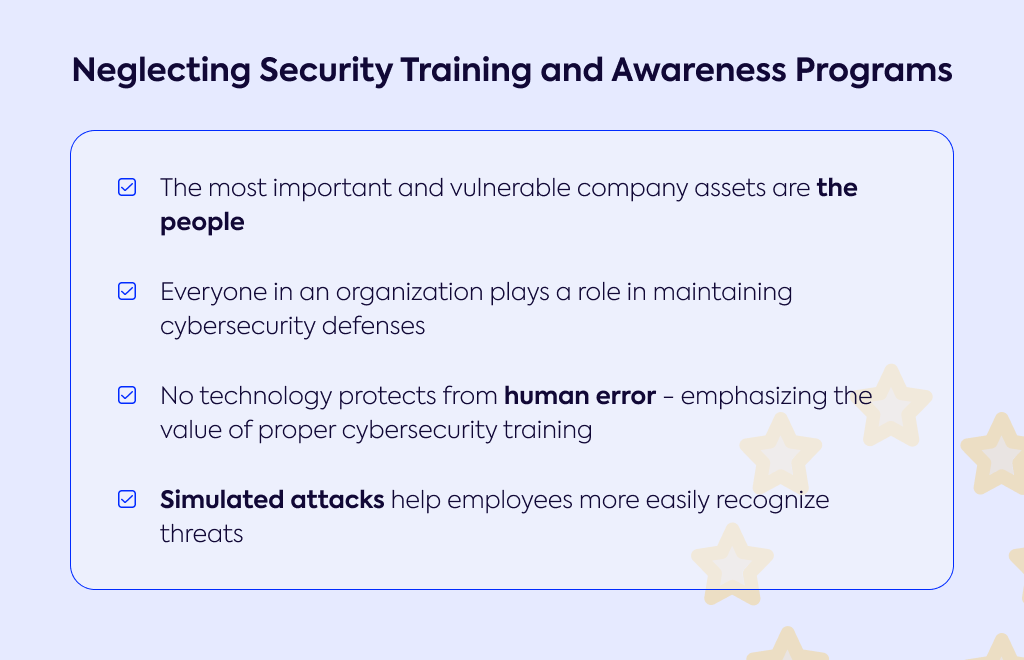
Trying to manage NIS2 compliance manually is like bringing a bicycle to a motorcycle race - you'll never keep pace.
Manual processes are not only slow but prone to errors, from missed documentation to inconsistent implementation of security controls.
The continuous monitoring that NIS2 requires simply can't be accomplished efficiently by hand.
You need automated solutions that constantly scan your infrastructure for vulnerabilities and compliance gaps.
These tools provide real-time visibility into your security posture, allowing your team to address issues immediately rather than scrambling before assessments.
Many organizations compound this problem by using multiple disconnected security solutions.
This fragmented approach creates blind spots and inefficiencies that undermine compliance efforts.
Look instead for integrated platforms that integrate compliance requirements across multiple frameworks like NIS2, GDPR, and ISO 27001.
This unified approach reduces complexity and helps ensure nothing falls through the cracks.
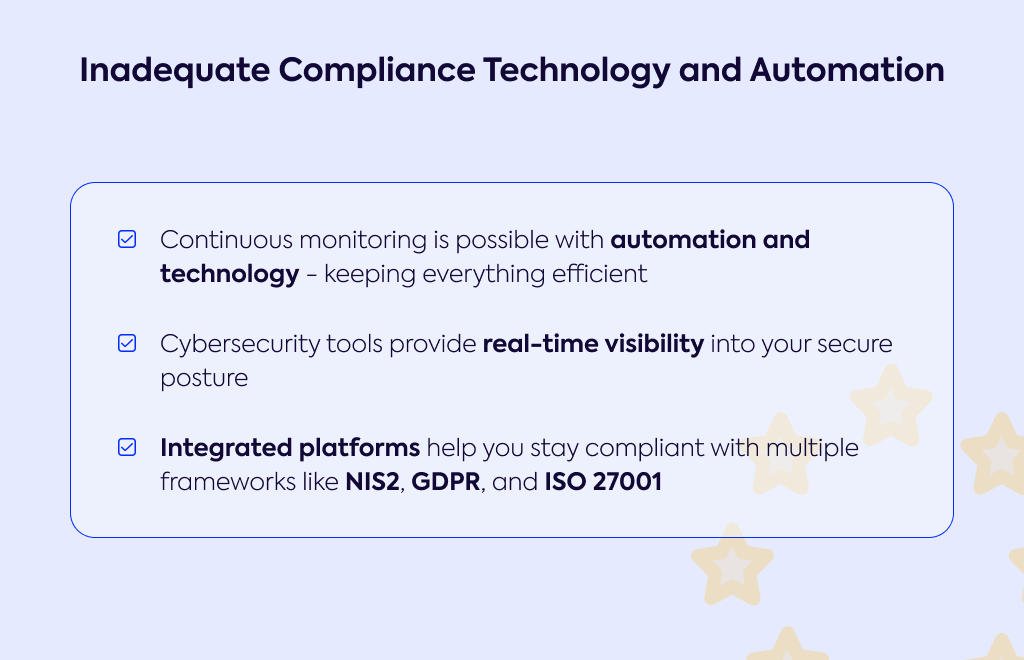
NIS2 introduces enhanced governance requirements and board-level accountability that many organizations aren't prepared to handle.
The specialized knowledge needed for implementation often exceeds what's available in-house.
The stakes are higher now too. NIS2 brings more stringent supervision and enforcement, with potential fines reaching €10 million or 2% of global turnover.
These aren't slaps on the wrist - they're serious financial penalties that can affect your bottom line.
To overcome this challenge, you need clear internal protocols for who's responsible for what aspects of compliance.
Your governance structure should establish clear reporting lines all the way up to board level.
If you lack the necessary expertise internally, consider bringing in specialists who understand the technical and regulatory nuances of NIS2.
The investment in proper expertise now can save you from costly penalties later.
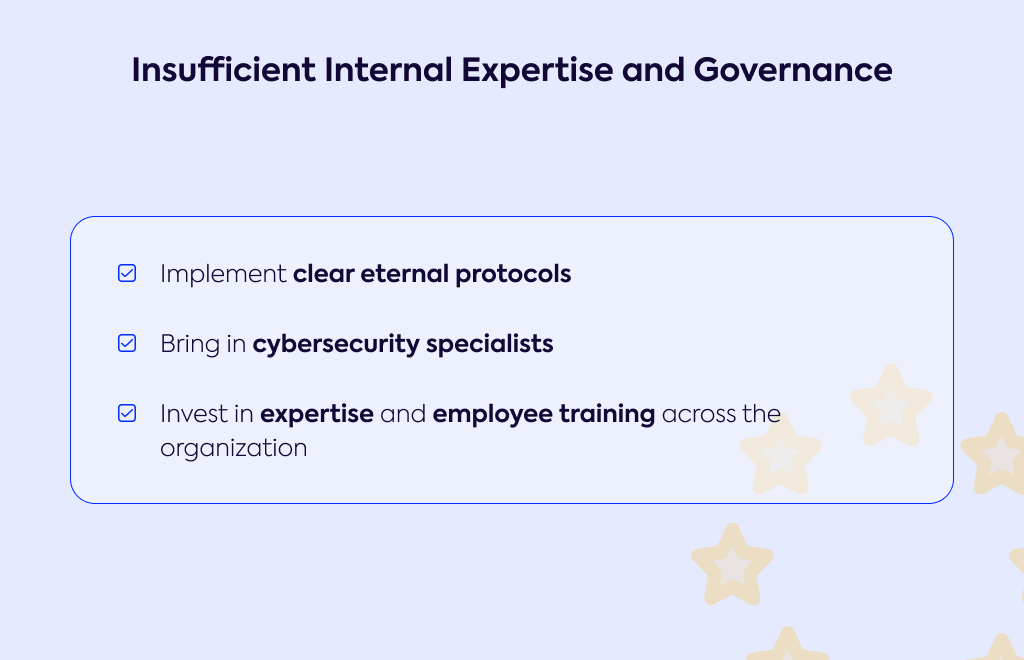
Many organizations still treat risk assessment as an annual event rather than an ongoing process.
This outdated approach leaves you vulnerable in a threat landscape that evolves daily, not yearly.
Under NIS2, risk management requires constant attention.
The once-common practice of point-in-time assessments no longer provides adequate protection.
You need systems that continuously monitor for new vulnerabilities and changes in your risk profile.
Effective risk monitoring includes robust vulnerability management to detect and fix weaknesses before attackers exploit them.
This means implementing automated scanning tools and patch management systems that help identify and remediate security gaps quickly.
Train your staff on basic cyber hygiene practices and create a security-aware culture where people naturally spot and report potential issues.
When everyone understands their role in maintaining security, your organization becomes more resilient to evolving threats.

Feeling overwhelmed by the complexity of NIS2 compliance? You're not alone.
The pitfalls we've discussed represent real challenges that many organizations struggle to overcome with their existing resources and expertise.
At Gauss, we specialize in developing custom solutions that address these exact challenges.
Our team understands both the technical and regulatory aspects of cybersecurity compliance, helping you transform potential pitfalls into a robust security posture.
Whether you need automated compliance monitoring, third-party risk assessment, or comprehensive security training programs, our custom solutions are designed around your specific organizational needs.
Contact us today to start a conversation about how we can help you navigate NIS2 compliance with confidence.

